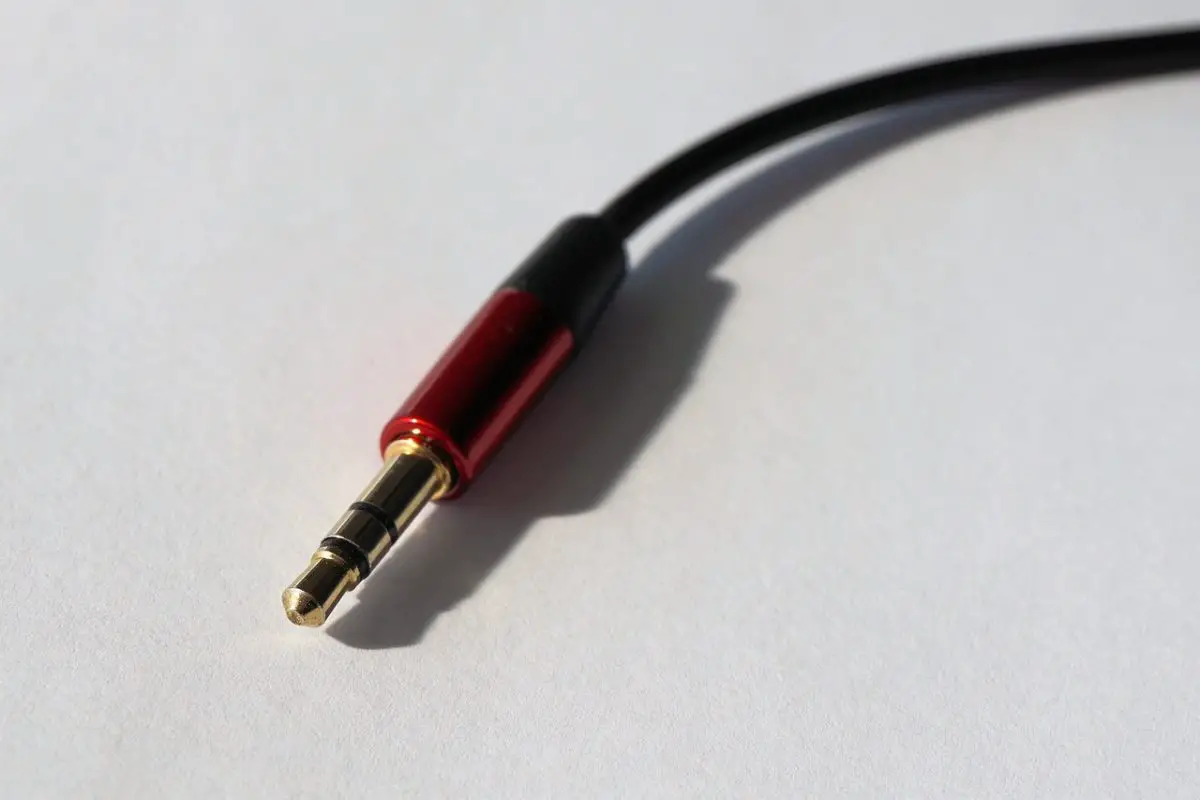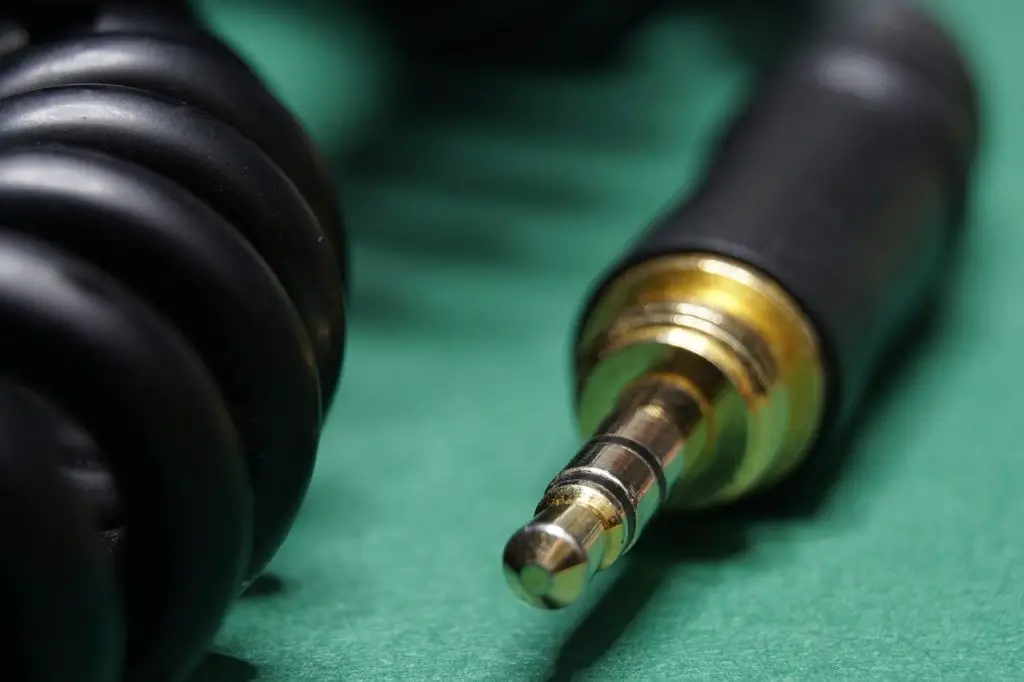Do you ever get lost trying to figure out how to use a headphone jack or plug? You might be surprised to know that these connectors work a bit differently from one another. But how do headphone jacks and plugs work?
This article covers the basics of headphone jacks and plugs and how these devices work. So if you’re a musician trying to get the best sound out of your gear or are just curious about what you can do to enjoy music better, this post is for you!
How do headphone jacks and plugs work? Audio signals are sent through electricity when a male headphone plug is put into a female headphone jack. There are a variety of jacks and plugs available. Although they all serve the same function, they are only sometimes compatible with one another in size, wiring, microphone inclusion, connection quality, or electrical conductivity.
What are headphone jacks and plugs?
Headphones have a connector called a headphone jack, a port on your device. A phone jack, audio jack, or auxiliary input is another name for this connection type. The plug is the end of your headphones’ cord that goes into the jack.

The Association of Electrical & Mechanical Trades has established gender designations for jacks and plugs. The jack represents the female end of the connection, while the plug represents the male end.
In technical terms, the headphone jack and plug are electrical connections. In tandem, they carry analog signals from your audio source to your headphones. As an aside, there are headphone ports that can carry both analog and digital signals. Google’s Chromecast, for instance, has a single 3.5mm connection that can send out either analog or digital information.
AKAI Professional MPK Mini MK3

AKAI Professional MPK Mini MK3
How do headphone jacks and plugs work?
A metal pin in the headphone jack carries the audio signals. These conductors have varying degrees of durability thanks to their gold, nickel, and brass platings. On the other hand, the jack is hardly more than a hollow barrel wrapped with wires. The signals sent by the plug and jack must match. Thus the conductors in each must be the same.
The type of connection used will depend on the wiring of the headphone jack and plug and the device being used.
Headphone jacks and plugs often have anything from two to five wires, or “conductors,” running through them. The conductors of a headphone plug need to be positioned just the right way for it to fit into a headphone jack and successfully transmit the desired audio signal(s).
When a headphone plug is inserted into a jack, the conductors inside the plug make contact with the corresponding conductors inside the jack. This completes a circuit and allows audio signals to be transmitted from the device to the headphones. The type of connection used will depend on the wiring of the headphone jack and plug and the device being used.

Headphone jack and plug sizes
Headphone jacks and plugs are essential components that enable us to connect our headphones to different devices. The most commonly used jack and plug size is 3.5mm, which is found on most smartphones, laptops, and computers. However, there are other sizes available, such as the 2.5mm and 6.35mm, which are used for older mobile phones and professional audio equipment, respectively.
In recent years, some manufacturers have introduced proprietary connectors, such as the Lightning connector used by Apple and the USB-C connector used by some smartphones and laptops.
This table outlines the most common types of headphone jacks and plugs, along with their sizes, uses, and compatibility with devices.
| Type of Jack/Plug | Size (mm) | Use | Compatibility |
|---|---|---|---|
| 2.5mm | 2.5 | Older mobile phones, some small devices | Limited to certain devices |
| 3.5mm | 3.5 | Most smartphones, laptops, computers, and audio devices | Widely used and compatible with most devices |
| 6.35mm | 6.35 | Professional audio equipment, guitar amplifiers | Less common and not compatible with most devices |
| Lightning | N/A | Apple devices (iPhone 7 and later), some headphones | Proprietary and limited to certain devices |
| USB-C | N/A | Some smartphones and laptops | Increasingly popular, but not yet widely adopted |
If you want even more tips and insights, watch this video called “Audio Jack Detection” from the FairchildSemi YouTube channel.
Frequently asked questions (FAQ)
Do you still have questions about how headphone jacks and plugs work? Below are some of the most commonly asked questions.
Are plug-in headphones better?
Everyone knows that the sound quality of wired headphones is better than that of wireless headphones. This is because they have such finely tuned hearing that they can pick up on the tiniest sonic differences.
How do you connect headphone jacks?
You may find the Mini Plug hole(s) on the computer’s sound card, front or side, or on the device itself. There should be a 3.5 mm jack, usually colored brass, on the side or front of your laptop to make the connection. The stereo connector on certain high-end headphones measures 1/4 inch (6.3 millimeters).
Why do headphones have two jacks?
You’ll find two jacks on a typical computer headset: one for the headphones and one for the mic. Although it may appear complicated at first to connect the headset to your computer using two connectors, doing so is rather straightforward.
Conclusion
And that’s all about the basic workings of headphone jacks and plugs. Now that you know how these connectors work, it is time to explore them yourself.
So, do these help you understand the function of both devices? And did I cover everything you wanted to know? Let me know in the comments section below (I read and reply to every comment). If you found this article helpful, share it with a friend, and check out my full blog for more tips and tricks on music production. Thanks for reading, and never stop making music.
Key takeaways
This article covered how headphone jacks and plugs work. Here are some key takeaways:
- Headphones have a connector called a headphone jack, a port on your device.
- A metal pin in the headphones’ jack carries the audio signals.
- To connect headphones, the female end goes into the jack, while the male end fits into the plug.
- When a headphone plug is inserted into a jack, the conductors inside the plug make contact with the corresponding conductors inside the jack.
- The most commonly used jack and plug size is 3.5mm, which is found on most smartphones, laptops, and computers.















